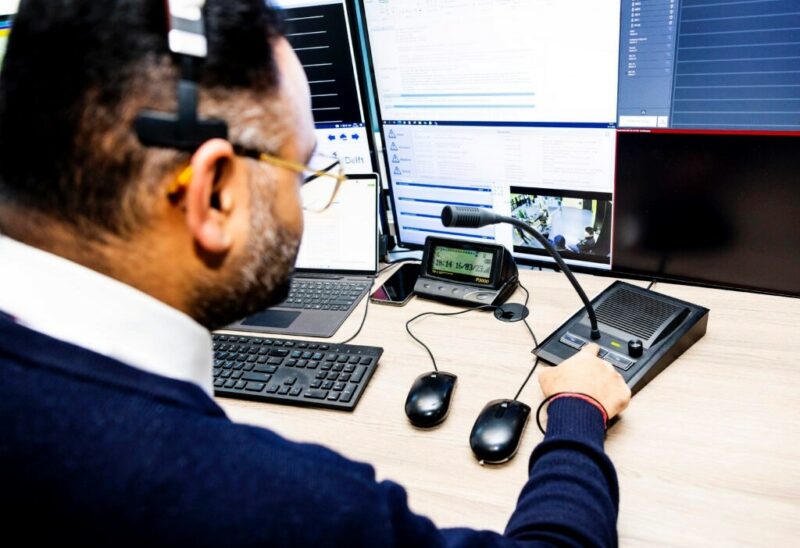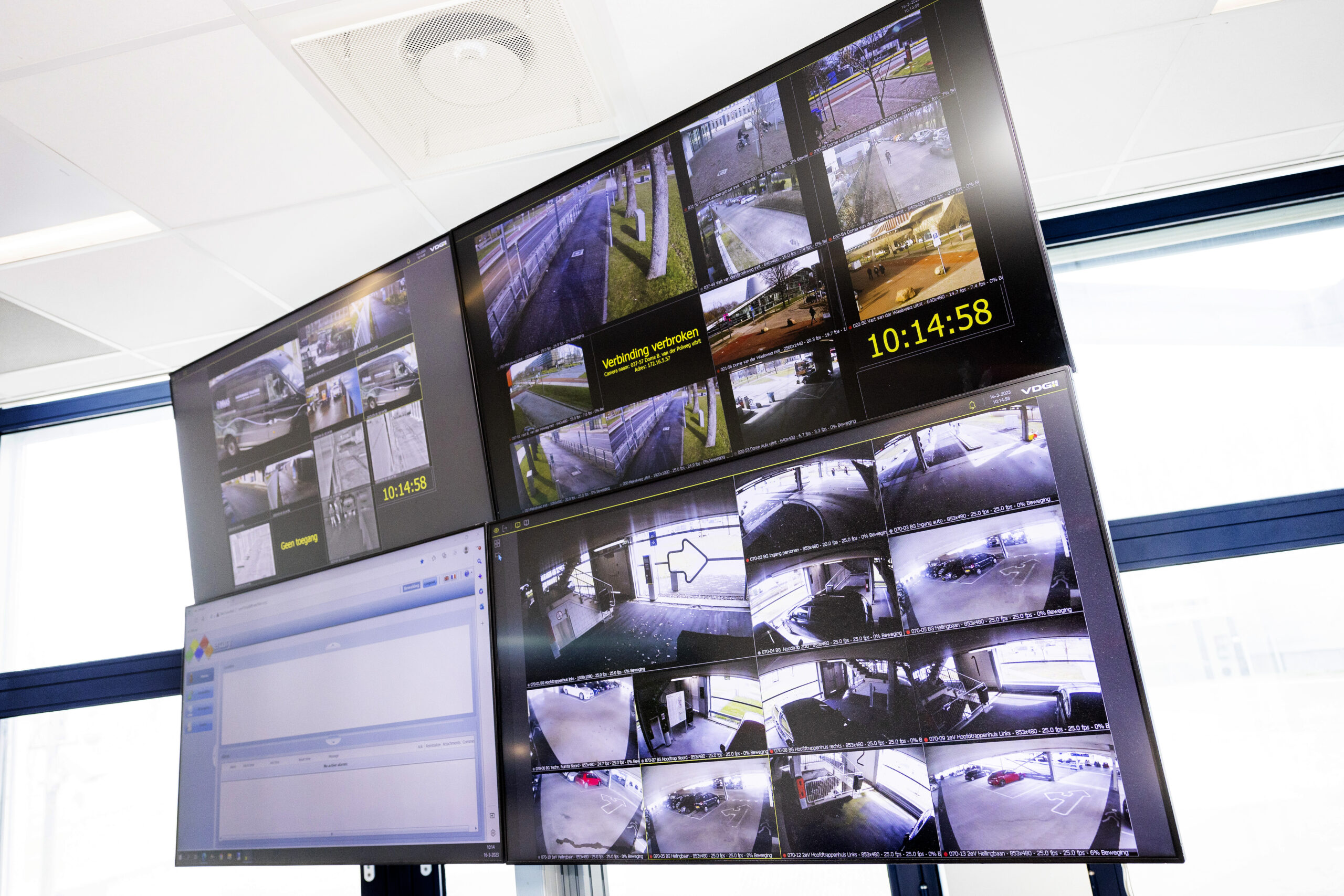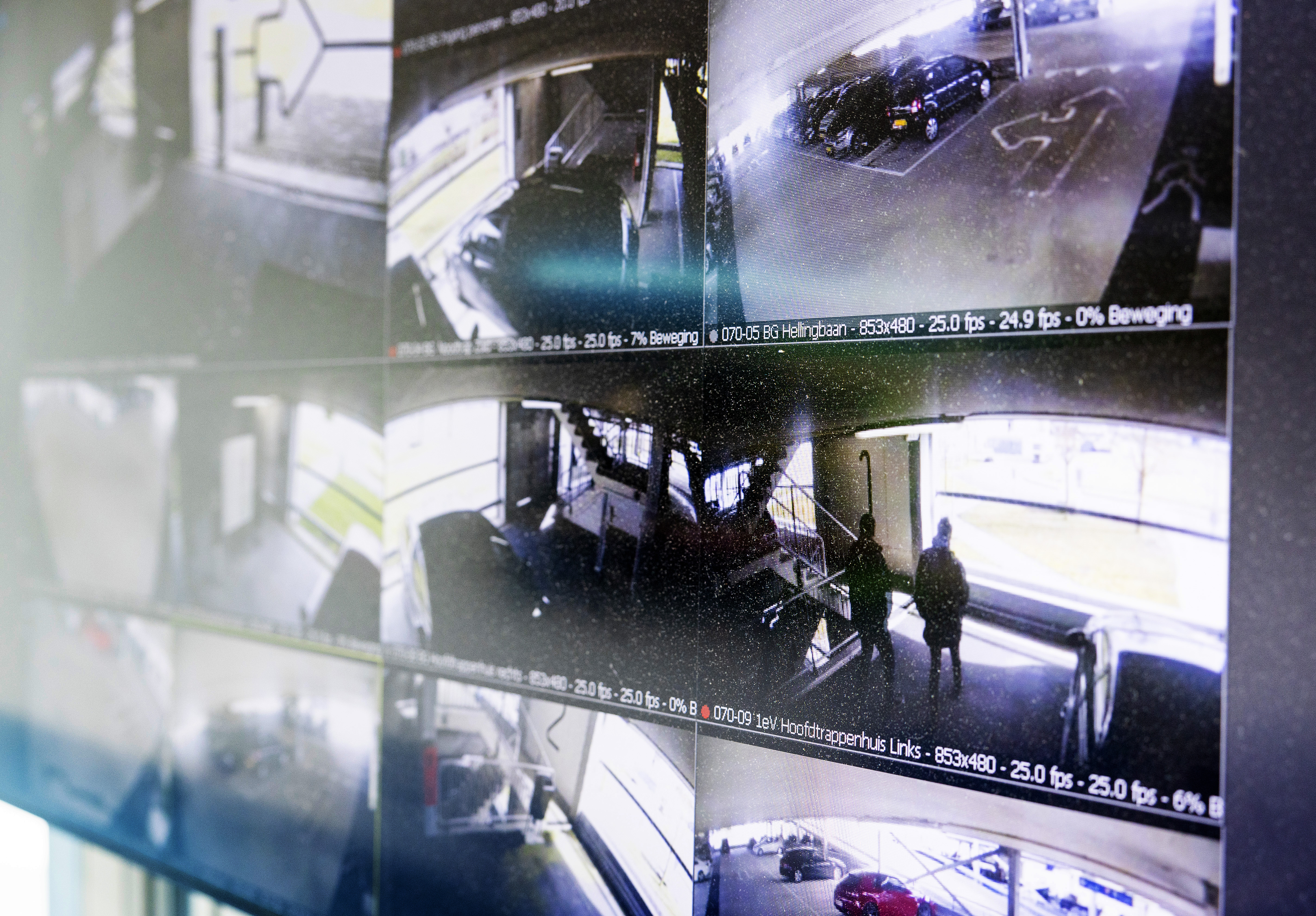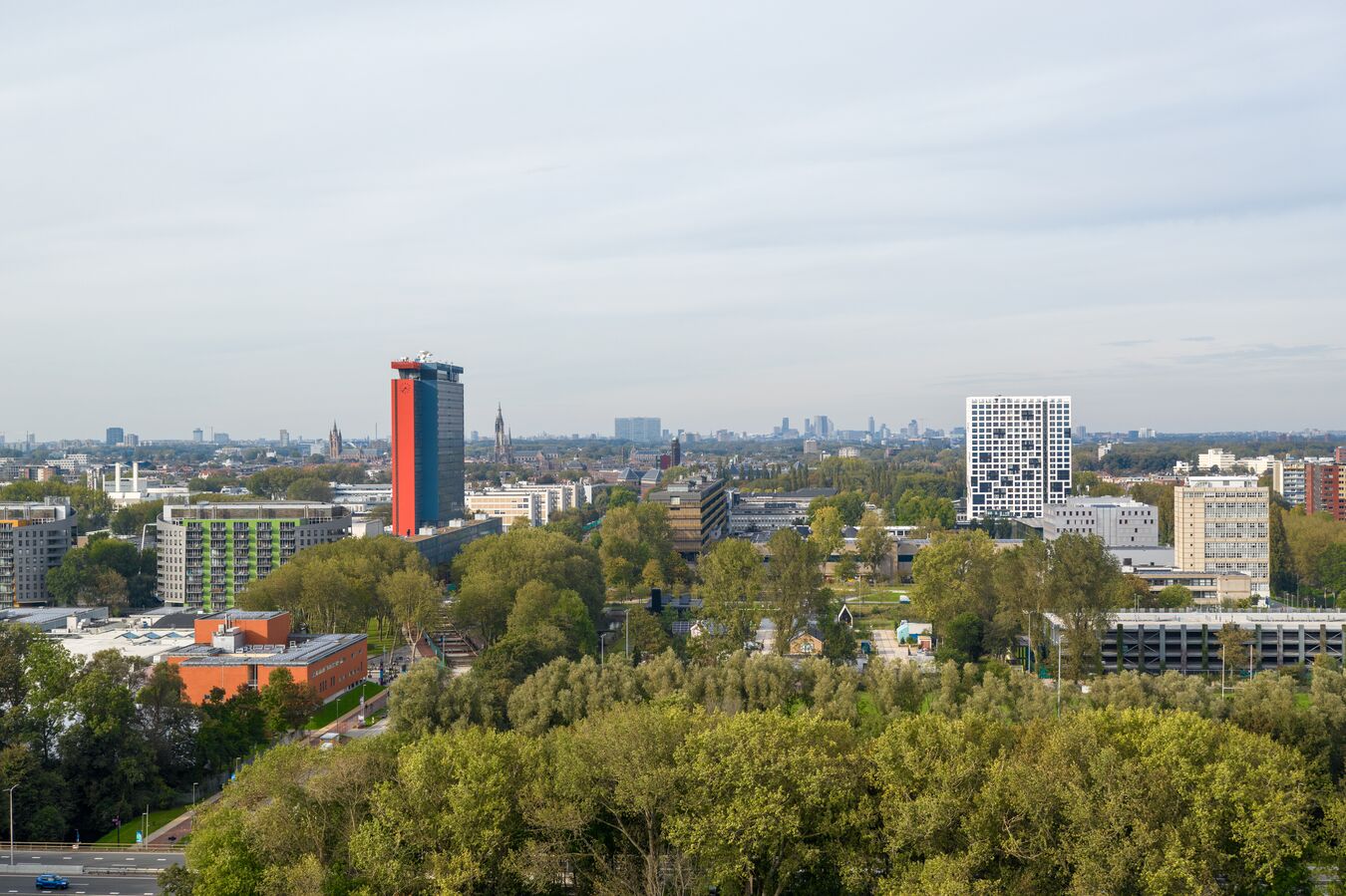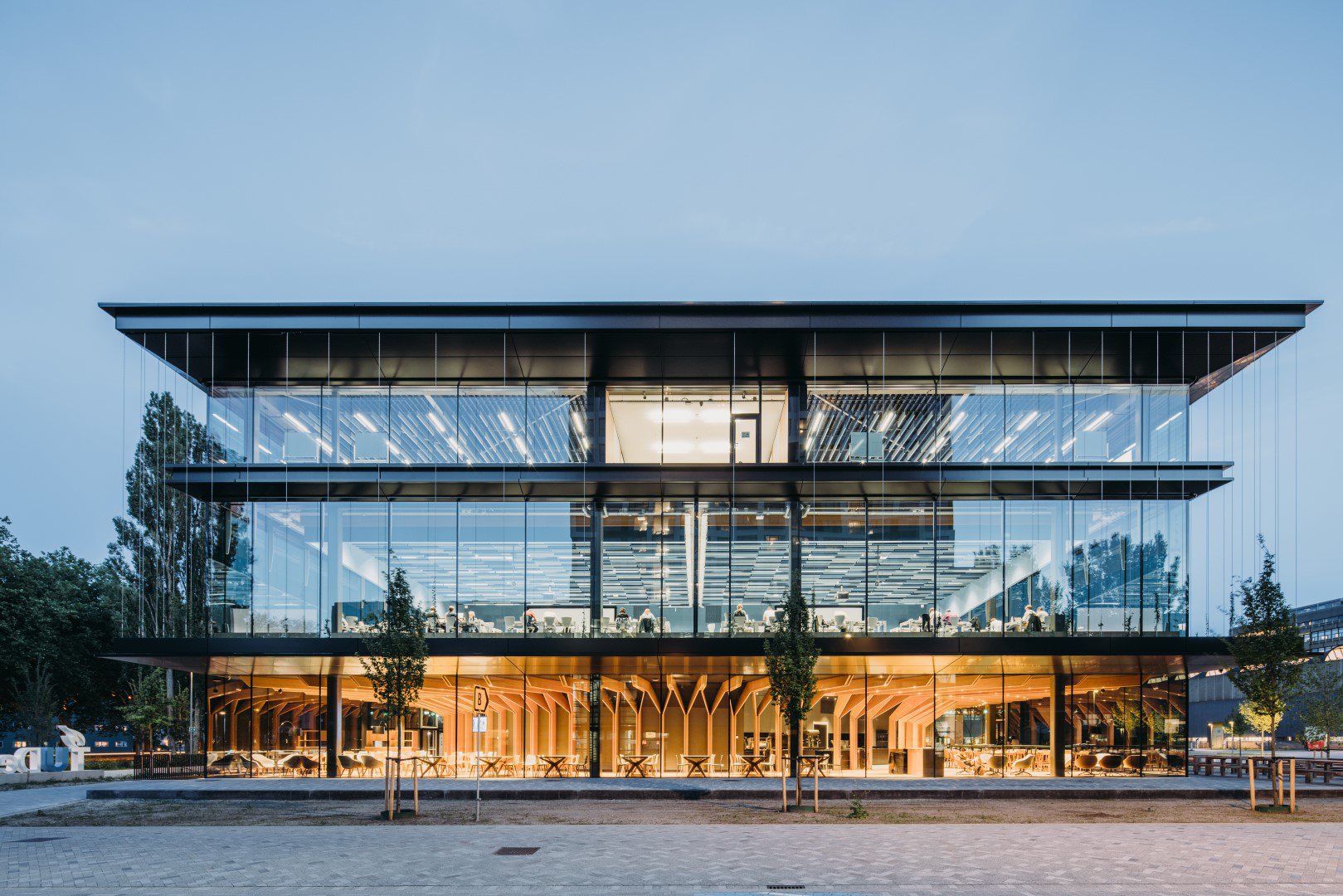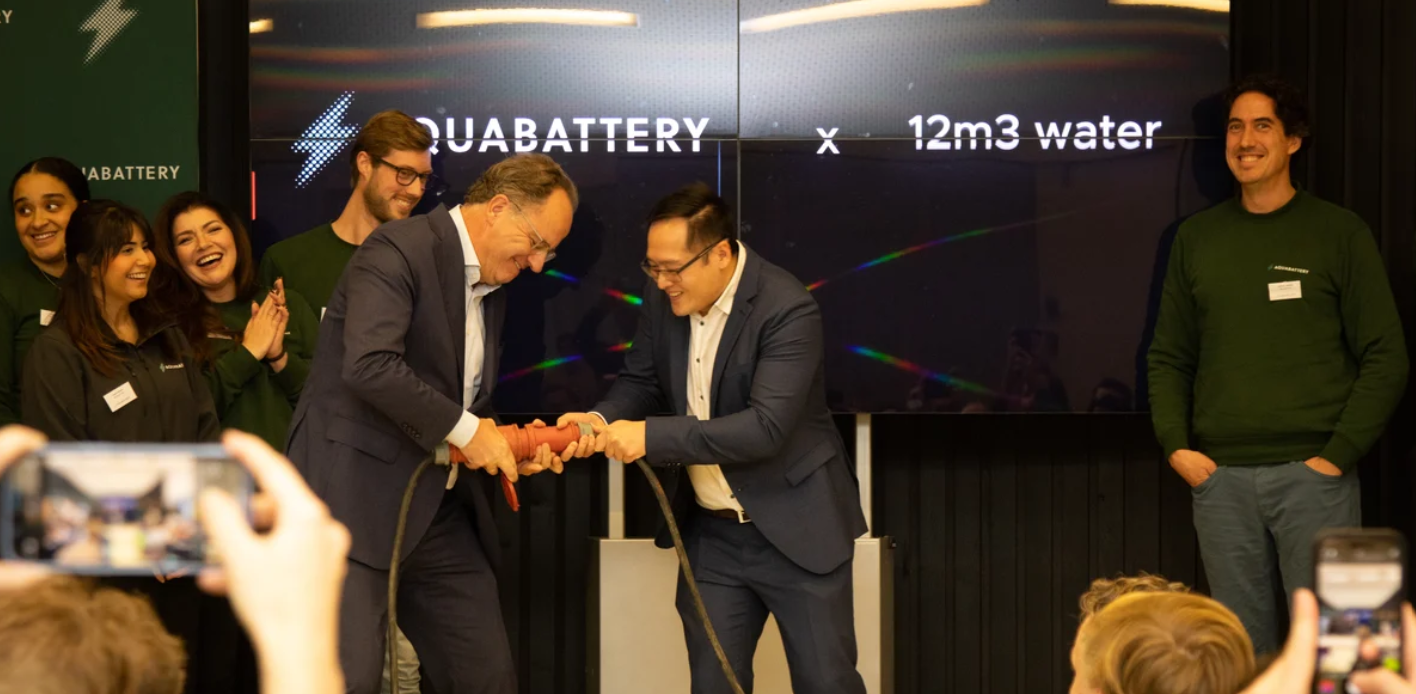That’s an interesting question, and something that could pique one’s curiosity. But arranging for a visit isn’t all that easy. The eyes and ears of the TU Delft campus, where all reports of fire, breaking and entering, and emergency alarms are received, are heavily secured Fortunately, Sebastiaan Star, Campus Safety Manager, can tell us a great deal about the TU Delft control room.
The campus is comparable to a medium-sized municipality
Sebastiaan Star is Campus Safety manager at TU Delft. His department deals with the physical safety of students, employees, and visitors of the campus. His job profile has three components. In the first place, his department manages the emergency response organisation. Second, he is responsible for the deployment of security staff from the G4S company. Up to a total of 45 security staff work on the campus. That is also quite necessary considering the size of the campus, 160 ha.
Sebastiaan Star: “Our campus is comparable to a medium-sized municipality, with up to 35,000 persons who stay there every day. And that comes with similar problems, including breaking and entering, burglary, stalking, people fainting, fire et cetera – you name it”
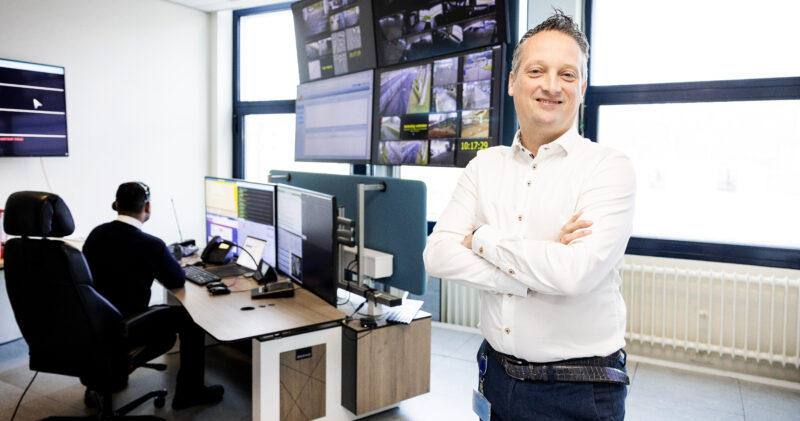
The control room operator monitors all the live camera screens
And finally, his department is responsible for the control room, were specially trained security officers take turns as control operators. The control room operator watches four large monitors with live camera feeds and also deals with incoming reports of incidents on the campus. The screen display a selection of images from the hundreds of cameras that are installed over the campus.
A new control desk
The control room was recently renovated. This was only logical, according to Star. ‘Now we simply have a good chair, modern monitors and a well laid out control desk, with one keyboard and one mouse with which the various visual accessory systems can be operated. So we no longer have a separate keyboard and mouse for each system.’
Building a department of campus safety
This renovation is one of the results accomplished since the appointment of Sebastiaan Star in November 2018. Before that, Star worked at the ICT department of TU Delft, during his last year there as manager. At the time, a Department of Campus Safety did not yet exist, but of course there were various safety topics involving the campus that TU Delft discussed with the emergency services and the municipality. It was therefore logical to establish a department that would specifically focus on matters of campus safety. The emergency services and the Municipality of Delft made it clear that they wished to have a permanent point of contact.
If you make a good plan, then you become part of it
As ICT manager, Star drafted a plan on how he would tackle establishing such a safety department. Star already had 20 years of experience as a volunteer for the Rotterdam-Rijnmond Safety Region, so he had an affinity for and knew something about safety. And, as is often the case, if you make a good plan and know enough about the subject, you ‘become part of it’. That also happened to Sebastiaan Star, he says with a laugh.
Digitising the control room
After replacing the hardware, it’s now time to do something about the software. Sebastiaan Star explains why this is necessary by describing what now happens when a report or alarm comes in. ‘The control room operator receives a telephone call via the emergency number 015-2788888. But the operator can also receive a fire alarm. Then, depending on the type of report or alarm, the operator runs through a protocol. At present, the operator has to manually transfer the report or alarm to the relevant emergency services, and that is fairly complicated. It can all be done more efficiently and digitally.
Better quality and faster service
‘What we aim to achieve is the digitisation of our protocols’, explains the Campus Safety Manager. ‘When an operator fills out the fields in his digital system, the emergency services are immediately alerted’. That has two major benefits. In the first place, it improves the quality of the assistance. As all calls are handled more uniformly and consistently, the same quality of service is provided to everyone regardless of the specific request. Second, the assistance is called in more quickly. ‘Once the operator enters an address into the system, the emergency services are automatically alerted and can get moving. Previously, the telephone call first had to be completely dealt with and taken care of.’
Sebastiaan Star makes use of his knowledge of and experience with ICT for this digitisation project. ‘Such a control room uses a great deal of ICT. So it helps if you understand what is actually going on in a digital system. And I also know the people working at the ICT department quite well, which also helps quite a bit.’
The planned innovations include the following
The first change to be implemented is ensuring that the various emergency services are connected. ‘And that they cooperate with each other’, adds Star. So what if a fire alarm comes in. In that case, some of the fields are automatically filled out, and the cameras automatically focus on the relevant area. The emergency response team and the fire brigade are automatically alarmed. In summary: ‘We have to teach the systems to communicate with each other.’ At the end of 2022, Star started a pilot project for this integrated emergency service system .The project is being implemented in two TU Delft buildings: the Campus Real Estate & Facility Management building and the Applied Sciences faculty building. The results of the pilot are not yet known.
The direction to be taken during the next 10 years
As Star sees it, the steps being taken provide an indication of where the control room will be headed during the next 10 years. For example, if a card is presented somewhere in a building without the necessary authorisation, then the camera will automatically zoom in on the door concerned and the person will appear on screen. If the person then forces the door, the cameras will follow the person throughout the building’, according to the Campus Safety Manager. Buildings are becoming increasingly intelligent with the help of data.
“In 10 years, much more information will be available from building sensors and all that data will be interconnected, making integrated safety a reality.”
The security officer’s job is in transition
This means that the work done by the security officer is moving in the direction of the control room operator. The security officer will then be given more responsibilities and will have to develop more competences, namely the analysis of information coming from sensors. Sebastiaan Star wonders: ‘Why should a security officer have to get on his bicycle in the morning to open a door on the other side of the campus for the cleaning services if the doors can also be operated remotely from the control room? That’s the direction we have to take’.
Star is satisfied with the steps that he has been able to take until now together with his department. ‘I think that the investments in our control room have resulted in better cooperation with the emergency services around us. That is a significant improvement and provides perspective for the future’.
Safety continues to depend on people
The cooperation with his team also provides Star with hope for the future. After all, regardless of digitisation, safety will continue to depend on the people involved. ‘The team feeling is enormously important. Formally, the security officers and the control room operators are from a different company, namely G4S. But we work together with them so closely that we have come to see the security officers as members of our own team.

